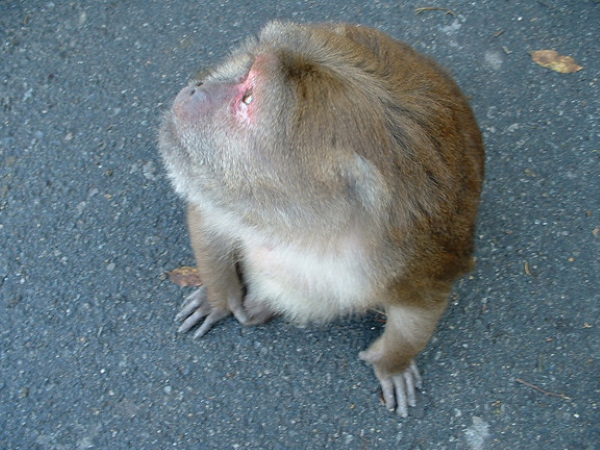Old & busted: “Please don’t feed the animals” signs at zoos. New hotness: “Please don’t OVER feed the animals” signs for zookeepers. Read on to find out why.
Really Big Cat
Xiaoyun might mean “Little Cloud” in Chinese but this rare and endangered Clouded Leopard hasn’t been little size-wise in quite some time. The combination of a sedentary lifestyle, old age, and frequent meals served up by zoo staff make Xiaoyun the fattest fat cat in China. Even Chinese zoo visitors are appalled at this formerly lithe and powerful creature’s descent into an unhealthy, obese furball and have taken to social media to bemoan Xiaoyun’s condition and castigate staff at his home in the Chengdu Zoo. (images via PetsLady at top and BOLON above)
Jumbo Elephants
How do you know an elephant is overweight? Kari Morfield, an animal endocrinologist at the Lincoln Children’s Zoo’s Wildlife Research Center, devised a scale ranging from 1 to 5 based on an estimated body mass index (BMI). While elephants in the wild average a 2 on Morfield’s scale, approximately 40 percent of those residing in American zoos rated a 5. Quality of life issues aside, obesity in elephants can lead to significant reproductive problems and with wild populations under pressure it’s essential that captive elephants be fit AND fertile.(image via Peter Becker)
Not So Little Nikki
When Nikki arrived at the National Zoological Park (or the National Zoo for short) in December of 2006, this Spectacled Bear was definitely not ready for prime time… prime rib, perhaps, or maybe one too many pic-a-nic baskets. Tipping the scales at over 500 lbs., Nikki weighed almost twice what a normal bear in the wild should and he was so heavy he had to stop every few steps to catch his breath. Staff at the National Zoo swung into action, putting Nikki on a special weight-loss diet that cut him down to size – over a hundred pounds worth – by the following summer. (Smithsonian’s National Zoo)
